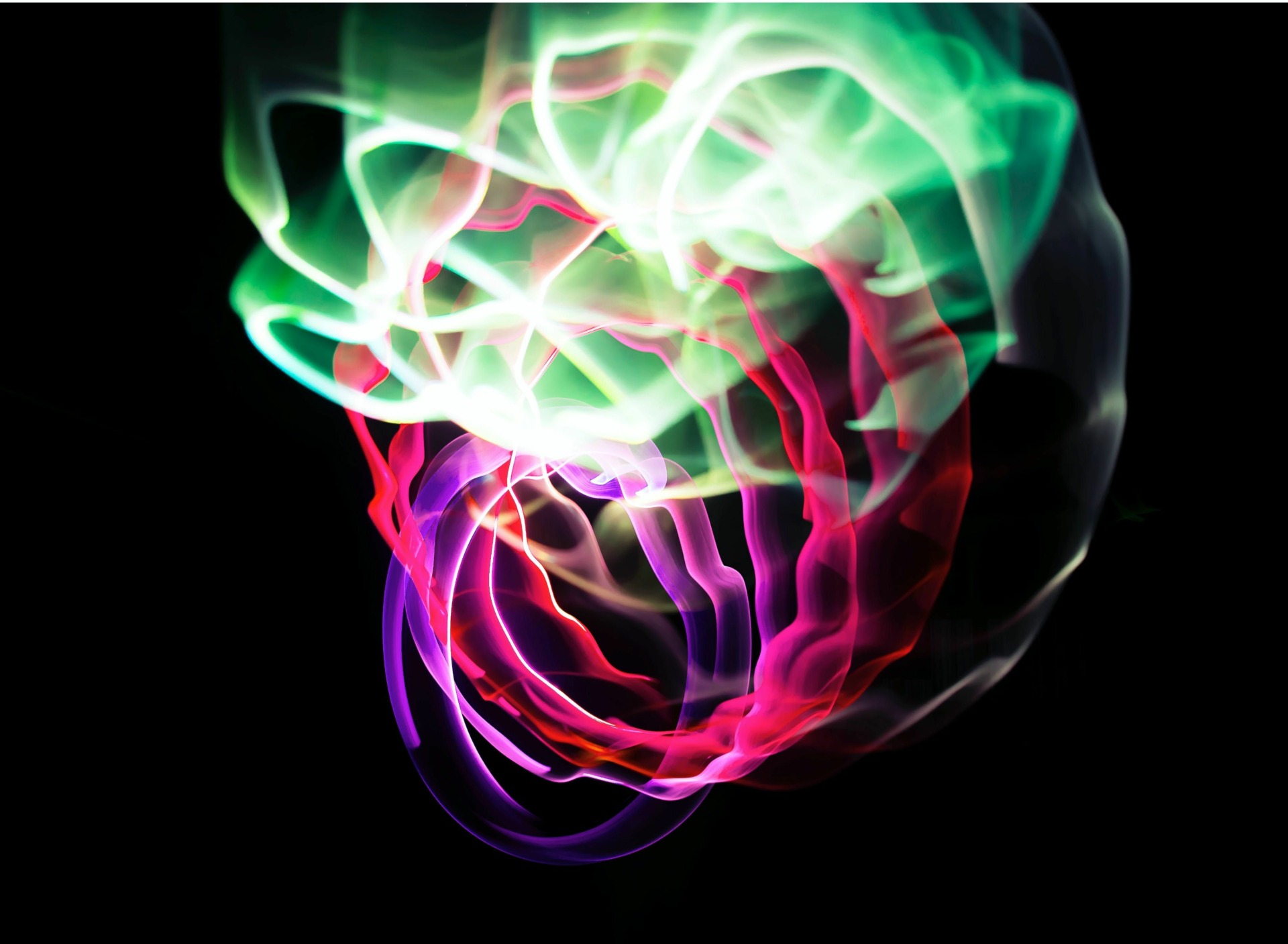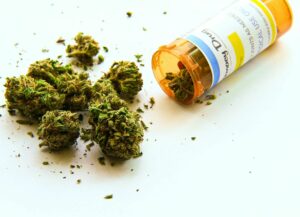As cannabis continues to enter the mainstream, it’s only natural that we begin to turn our attention to other stigmatized substances that could hold medical benefits—we’re talking, of course, about psychedelics.
Recently, small clinical trials in humans have shown the efficacy of LSD (lysergic acid diethylamide) and psilocybin, the psychoactive component of magic mushrooms, in treating conditions like depression and anxiety. These studies have renewed public interest in these substances—as have shows like Silicon Valley, which has made reference to microdosing psilocybin for therapeutic purposes.
FOLLOW US ON FACEBOOK & INSTAGRAM
What Are Psychedelics?
You might be tempted to lump cannabis, LSD and psilocybin into the same category. They all alter your mind after all. However, LSD and psilocybin are deemed psychedelics in the pharmacological sense, because they act on a specific place in your cells: serotonin receptor 5-HT2. Cannabis, as you may know, acts on the CB1 and CB2 receptors of the endocannabinoid system.
RELATED: WHAT IS THE ENDOCANNABINOID SYSTEM?
Studies suggest that it’s the activation of 5-HT2 by serotonin that leads to the psychedelic experience that LSD and psilocybin are responsible for—commonly known as tripping. Serotonin is a chemical that relays messages between cells. While we still don’t fully understand the role it plays in the body, research indicates that serotonin influences mood, social behaviors and appetite, among other life processes. Low serotonin levels are also associated with depression.
Though psilocybin and LSD are structurally different, they have effects that are characteristic of other psychedelics, like mescaline and dimethyltryptamine (DMT). Psilocybin and LSD can both lead to ego dissolution, or rather, a loss of your self-identity. While there aren’t any studies of this type on mescaline and DMT, both psilocybin and DMT are known to cause increased blood flow to the brain, forming connections between brain regions that don’t normally interact.
Psilocybin Has Its Roots in Aztec Religion & Rituals
Indigenous cultures in the Americas have a long history of psilocybin use as the substance occurs in many different types of mushrooms. For example, in Aztec society, mushrooms were part of religious rituals.
It was only in 1955 that the Western world was widely introduced to this substance, via Gordon Wasson, an author and amateur ethnomycologist who encountered the drug in Mexico. Gordon published a photo essay about his experience with magic mushrooms in Life magazine. With this essay’s circulation, these mushrooms were widely adopted by the hippie counterculture movement. This adoption, along with the poor understanding of psilocybin’s effects, led to its eventual strict categorization by the U.S. DEA as a Schedule I substance.
In spite of this scheduling, in recent years a number of small clinical trials have shown that psilocybin may have myriad health benefits. So far, it appears psilocybin may help with:
- Nicotine addiction
- Alcohol addiction
- Post-traumatic stress disorder (PTSD)
- Anxiety
- Depression
While these studies were small and consisted entirely of people who were open to this type of treatment, they’re still encouraging and offer insight into how we may treat these types of conditions in the future.
Psilocybin May Bring About a Kind of “Inverse PTSD”
By dissolving the ego, it seems as though psilocybin offers people an alternate view of reality. It allows them to view the world from a universal perspective, instead of an individual, self-centered one. And this self-surrendering may hold therapeutic potential.
Additionally, this shift in perspective, towards a more positive outlook isn’t temporary: In studies involving cancer patients with anxiety, those who took psilocybin reported feeling calmer immediately afterward, and they also reported the same feelings six months later.
“The moment [the patients] get psilocybin, their distress comes down,” says Stephen Ross, the lead author of the study, in The Atlantic. “That’s very new in psychiatry, to have a medication that works immediately for depression and anxiety and can last for that long.”
Though the research on psilocybin is promising, scientists still don’t understand what exactly is going on in the brain, though they do have some guesses. Psilocybin may modulate the prefrontal cortex and amygdala in the brain, which are responsible for things like:
- Social behavior
- Decision making
- Emotional responses
Stephen says that what may be happening is a kind of “inverse PTSD”—a positive memory that deeply affects trial participants for months afterward, in contrast to a severely traumatic one.
LSD Resets the Brain
Unlike psilocybin, LSD is a human creation. It was first made in 1938; its psychedelic properties were discovered in 1943, and it was actually used as a psychiatric medicine in 1947.
In the 1950s, the Central Intelligence Agency began experiments to see if it could be useful for mind control or chemical warfare, testing it on unsuspecting servicemen and students. Much like psilocybin, LSD gained popularity in the hippie counterculture movement of the 1960s, resulting in its eventual listing as a Schedule 1 substance.
Before LSD was outlawed, many studies on its effects took place. So far, studies have suggested that LSD has many of the same benefits as psilocybin: It may help with alcohol and nicotine addiction, as well as with depression and anxiety.
Currently, some young professionals have caught on to this and have begun microdosing LSD. Though there’s no solid research on microdosing, there are numerous successful accounts from folks who’ve used this method to combat anxiety and depression.
Recent research on LSD has used modern neuroimaging techniques to view subjects’ brains while on the drug. A 2016 study conducted at Imperial College London found that LSD causes regions of the brain that don’t normally connect to signal to each other. Additionally, those that usually do connect become segregated.
Typically, the brain performs functions such as seeing, moving and hearing via independent networks. But under LSD, these separate networks dissolve, and the result is a more integrated brain, explains Robin Carhart-Harris, one of the lead authors of the study.
It’s possible that LSD, much like psilocybin, forces the brain to construct new networks, and that this rewiring somehow resets the brain and helps people overcome trauma.
Guides Are Essential in Psychedelic Therapy
Now don’t go rushing off to try LSD or psilocybin just yet. Besides being illegal and hard to obtain, in the studies mentioned, participants often had a trained professional, or guide, alongside them.
“We call it psychedelic therapy, but we really should call it psychedelic assisted psychotherapy,” says author Michael Pollan, who gave a talk in San Francisco to promote his new book on the topic called How to Change Your Mind.
According to Michael, in many of these trials, researchers try to play down the role of the guide. However, in indigenous cultures where psychedelics are an important part of religious ceremonies and rites of passage, guides are central to the experience. Also, in these rituals, psychedelics are often used in a carefully designed context, and they’re never used alone.
“These drugs are so powerfully affected by set and setting that it’s only in the company of somebody you really trust, who knows the territory, that someone can surrender to the experience in a way that it can make it productive,” says Michael, who’s interviewed many folks who’ve gone through psychedelic therapy.
“It’s really a package that’s being tested, and that’s weird for the [pharmaceutical] industry or even the medical system,” he adds.
Michael’s right: In addition to needing guides, this form of therapy doesn’t fit into the current pharmacological model.
“Psychedelic therapy is a one time, or a two time or maybe a three-time thing,” he says. “It’s not a pill you take every day and [pharmaceutical companies] are in the business of selling pills people have to take every day, like SSRIs (selective serotonin reuptake inhibitor) or antidepressants.”
While these drugs are showing promise, it’s clear that there are many hurdles to overcome before these types of therapies are available to the public in the U.S.
Photo credit: Chris Arock
If you’re new to cannabis and want to learn more, take a look at our Cannabis 101 post. HelloMD can help you get your medical marijuana recommendation; it’s easy, private and 100% online.






